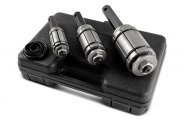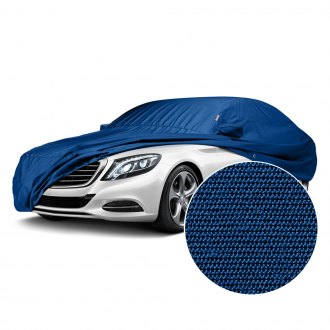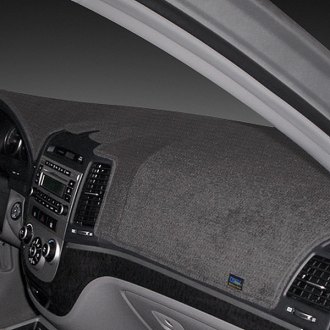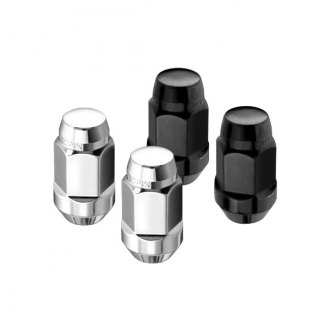De Tomaso Accessories & Parts
De Tomaso Parts
De Tomaso Wheels & Tires
De Tomaso Exterior Accessories
De Tomaso Automotive Lighting
De Tomaso Body Parts
De Tomaso Interior Accessories
Universal Audio & Electronics
 Installation Parts
Installation Parts Stereos
Stereos Speakers
Speakers Amplifiers
Amplifiers Subwoofers
Subwoofers Cameras & Driver Safety
Cameras & Driver Safety Alarms & Remote Start
Alarms & Remote Start CB Radios & Components
CB Radios & Components Antennas & Components
Antennas & Components Mobile Phone Cables & Connectors
Mobile Phone Cables & Connectors Bluetooth
Bluetooth Equalizers & Processors
Equalizers & Processors Batteries & Power
Batteries & Power Video
Video Radar Detectors
Radar Detectors GPS Systems
GPS Systems Mounts & Chargers
Mounts & Chargers Action Cameras & Accessories
Action Cameras & Accessories
De Tomaso Automotive Tools
 Oil Change Tools
Oil Change Tools Suspension & Steering Service Tools
Suspension & Steering Service Tools Spark Plug & Ignition Tools
Spark Plug & Ignition Tools Wheel & Tire Service Tools
Wheel & Tire Service Tools Engine Service Tools
Engine Service Tools Brake Service Tools
Brake Service Tools Fuel System Service
Fuel System Service Transmission & Drivetrain Service Tools
Transmission & Drivetrain Service Tools Pullers & Installers
Pullers & Installers Cooling System Service Tools
Cooling System Service Tools A/C Tools & Equipment
A/C Tools & Equipment Electrical System Tools
Electrical System Tools Diagnostic & Testing Tools
Diagnostic & Testing Tools Exhaust System Service Tools
Exhaust System Service Tools Auto Glass Tools
Auto Glass Tools Lockout Kits
Lockout Kits Jacks
Jacks Automotive Lifts & Stands
Automotive Lifts & Stands Repair Manuals
Repair Manuals Automotive Paint
Automotive Paint EV Charging
EV Charging Battery Chargers & Jump Starters
Battery Chargers & Jump Starters Dollies & Movers
Dollies & Movers Creepers
Creepers Auto Detailing
Auto Detailing Key Cutting Machines
Key Cutting Machines Dent Repair Tools
Dent Repair Tools Service Carts
Service Carts Vehicle & Parts Protection
Vehicle & Parts Protection
The list of racing drivers who went on to build their own cars is a short one, and includes illustrious names like Bruce McLaren and Jack Brabham. Alejandro de Tomaso was also among this select few. And while his personal racing exploits and those of the track cars he built pale in comparison to the competition successes of the preceding gentlemen, the road going sports cars he produced like the Mangusta and Pantera made the name De Tomaso renowned among car enthusiasts and collectors. De Tomaso also made luxury cars including the Deauville and Longchamp, and for several years it was the parent company of the legendary Maserati marque, but the company was primarily known as the builder of “affordable” Italian exotics. Unlike the temperamental and expensive to service 12 cylinder engines that powered competitors like Ferrari and Lamborghini, the Mangusta and Pantera were powered by dependable Ford V8s familiar to any American mechanic.
In 1959 mid-engine cars began to dominate Formula One racing, with Jack Brabham winning the championship that year in a mid-engine Cooper. But while British builders like Cooper, Lotus and Lola were at the forefront of this new technology, the more conservative Italian companies Ferrari, Maserati and OSCA were hesitant to switch from the traditional front-engine layout. De Tomaso and his wife Isabella were both driving for OSCA at the time. Disappointed in his employer’s reluctance to change and eager to design and race his own car, De Tomaso founded his own company that year in Modena, Italy, and in so doing became the first Italian manufacturer to construct a mid-engine race car. Although De Tomaso Modena SpA was an Italian company, Alejandro de Tomaso was born into a wealthy family in Argentina. The blue and white in the De Tomaso company logo are the colors of the flag of Argentina, and the stylized letter “T” is the brand that was used to identify the owners of the horses and cattle that roamed the family’s vast estate.
Unfortunately, De Tomaso’s Formula One chassis did not distinguish itself in competition, and he soon turned his attention to building high-performance sports cars. Throughout automotive history, it has been common for technology originally developed for the race track to soon find its way into production vehicles, and this is true of the mid-engine chassis design, with its superior balance and handling. The first mid-engine sports car was the Italian ATS 2500 GT, but De Tomaso’s Vallelunga followed soon afterward. Introduced at an auto show in 1963, production of the Vallelunga began in 1965. The car was assembled by famous Italian coachbuilder Ghia and featured a fiberglass body, pressed steel backbone chassis with tubular rear subframe, double wishbone coil spring suspension and 4-wheel disc brakes. The lightweight 1600 lb. car was powered by a British Ford 1.5L in-line 4-cylinder engine that sent its 104 horsepower through a Volkswagen Beetle transaxle. Only about 50 Vallelungas were produced, and in 1967 it was replaced by the Mangusta.
Although its chassis was based on the Vallelunga, the Mangusta sported a sleek body shape created by the celebrated Italian designer Giorgetto Giugiaro, with its most distinctive feature being the unique gullwing doors that opened for access to the engine and luggage compartments. Mangusta is Italian for mongoose, the cobra killing carnivore, and reportedly it was so-named because De Tomaso offered the car to Ford as a replacement sports car for the Shelby Cobra, which was then ending production. The first 289 c.i. Ford V8s for the Mangusta were rumored to have come from Carrol Shelby. The 289 was later replaced with the larger 302, and both engines were attached to ZF 5-speed manual gear boxes. Approximately 400 Mangustas were produced between 1967 and 1971. All but 50 had quad headlights, but these were mounted too low to meet federals standards, so the remaining cars were redesigned with pop-up headlights. Ford rejected the Mangusta, but Ford Division president Lee Iacocca would soon come calling seeking a mid-engine sports car.
When production of the Cobra ended, Ford tried adapting the Le Mans winning GT40 for road use. Although this venture was unsuccessful, Ford was still committed to being the first American manufacturer to offer a mid-engine sports car in the North American market. But with rival GM’s XP-880 mid-engine concept car rumored to be the basis for the next Corvette, Ford needed to act fast and so contracted with De Tomaso in 1969 to build an all new mid-engine sports car called the Pantera, which is Italian for Panther. Ford had exclusive rights to sell the car in North America through select Lincoln/Mercury dealers, but De Tomaso could sell the car in the rest of the world. The Pantera debuted in 1971 with a body designed by Tom Tjaarda of Ghia, who also designed the Ferrari 365 GT California Spyder, and a monocoque chassis created by Gian Paolo Dallara, who was also responsible for the Lamborghini Miura. The chassis featured unequal length A-arms and coilover shocks at all 4 wheels and 4-wheel disc brakes, and the car was powered by Ford’s 351 Cleveland canted valve OHV V8, rated at a conservative 330 hp and mounted in front of a ZF 5-speed manual transaxle.
While the Pantera was more expensive than its domestic competition, it was far more affordable than European exotics and delivered equivalent or better performance, with the 1971 model accelerating form 0-60 mph in just 5.5 seconds, taking the quarter mile in only 13 seconds, and reaching a top speed of 150 mph. But by 1974 the automotive marketplace had changed. Higher fuel prices, increased insurance rates, and stricter emissions controls combined to shrink the demand for performance cars in general, and after selling a total of about 5500 Panteras, Ford imported the last one in August 1974. Early Panteras had quality control issues but Ford steadily improved the car throughout its short run. Compression was lowered to comply with emissions regulations in 1972, which reduced power output, and federally mandated impact resistant bumpers were added in 1973. After 1974 De Tomaso continued to market the car, revising the chassis and styling as necessary in an effort to keep the car current. The last Pantera was produced in 1993 and a total of about 7200 were built. Alejandro de Tomaso passed away in 2003, and his namesake company went into liquidation the following year. There have been several attempts to revive the nameplate.
For a car that was produced in such small numbers, the De Tomaso Pantera has a large and active network of enthusiasts, clubs, and Internet forums where owners and enthusiasts can share knowledge and advice. Most of the parts needed to modify and maintain these cars is still available and you can find much of what you need right here on our digital shelves. The engines in many exotics often require a lot of green shelled out to some “guru” to keep them running, but any hot-rodder can tune and breathe more power into the Pantera’s Ford 351C V8 and we have many of the hop-up parts you need for the job. Unlike some classics that have the look of a certain era, the Pantera’s styling has a timeless appeal that looks as clean today as it did in 1971. It’s the perfect combination of head-turning exotica and domestic refinement, and we stand ready with a complete selection of maintenance, repair, and appearance products to help you enjoy the ride.
Dress your vehicle up. Keep it running at its peak or unleash its hidden power. Make it look like it just rolled off the show room floor. Take care of it and maintain it. You name it, we've got it. We have gathered everything you need to make your De Tomaso perfect both inside and out. CARiD's job is to meet your every expectation and provide you with quality and durable accessories and parts designed with excellence in mind. Whether you're after luxurious style, brisk performance, or anything in between, our wide assortment covers all the bases.
Featured Products
Browse by Model
Popular Products
-

-

-
 $24.69 - $24.97
$24.69 - $24.97
















